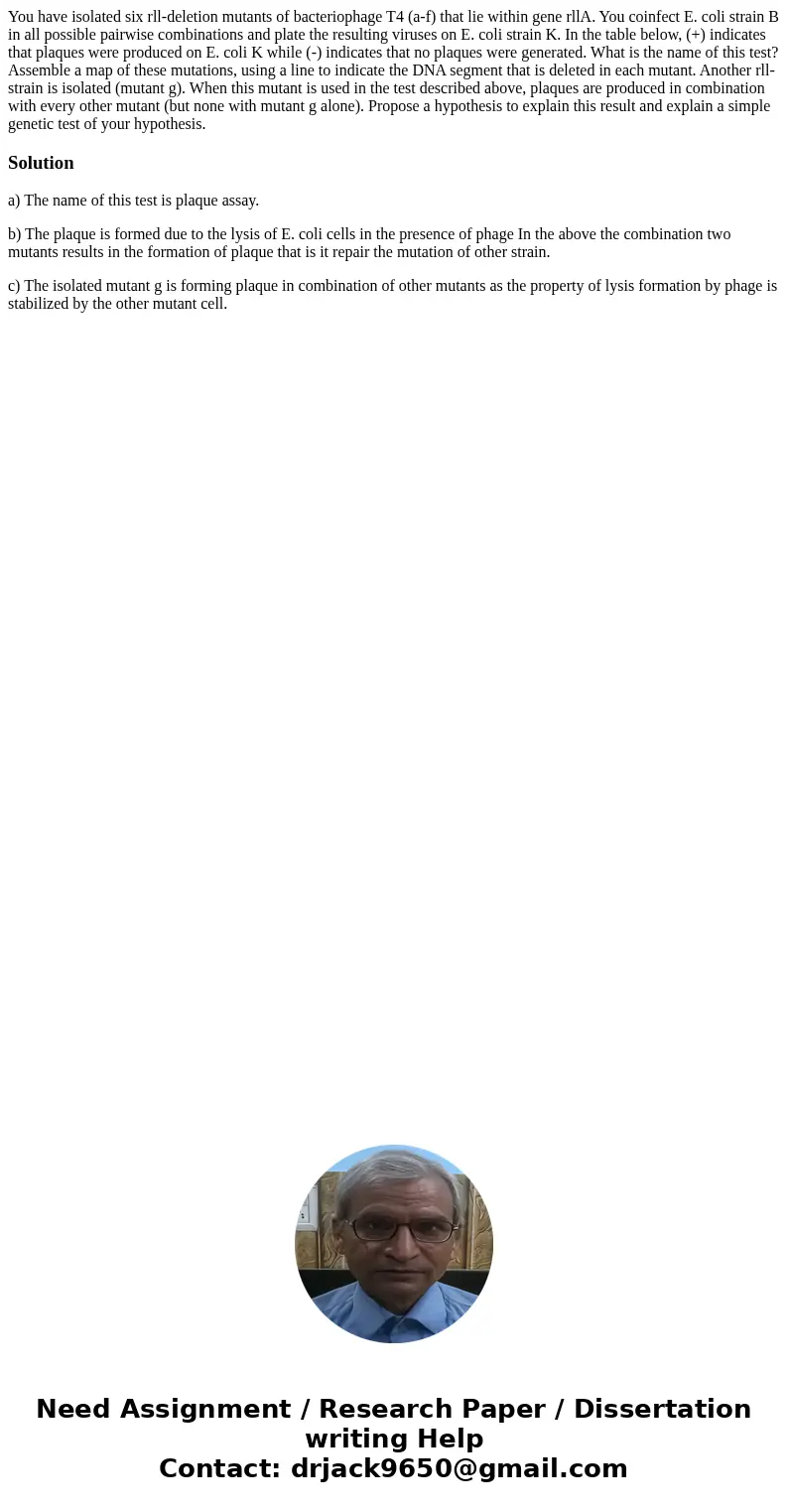You have isolated six rlldeletion mutants of bacteriophage T
You have isolated six rll-deletion mutants of bacteriophage T4 (a-f) that lie within gene rllA. You coinfect E. coli strain B in all possible pairwise combinations and plate the resulting viruses on E. coli strain K. In the table below, (+) indicates that plaques were produced on E. coli K while (-) indicates that no plaques were generated. What is the name of this test? Assemble a map of these mutations, using a line to indicate the DNA segment that is deleted in each mutant. Another rll- strain is isolated (mutant g). When this mutant is used in the test described above, plaques are produced in combination with every other mutant (but none with mutant g alone). Propose a hypothesis to explain this result and explain a simple genetic test of your hypothesis.
Solution
a) The name of this test is plaque assay.
b) The plaque is formed due to the lysis of E. coli cells in the presence of phage In the above the combination two mutants results in the formation of plaque that is it repair the mutation of other strain.
c) The isolated mutant g is forming plaque in combination of other mutants as the property of lysis formation by phage is stabilized by the other mutant cell.

 Homework Sourse
Homework Sourse